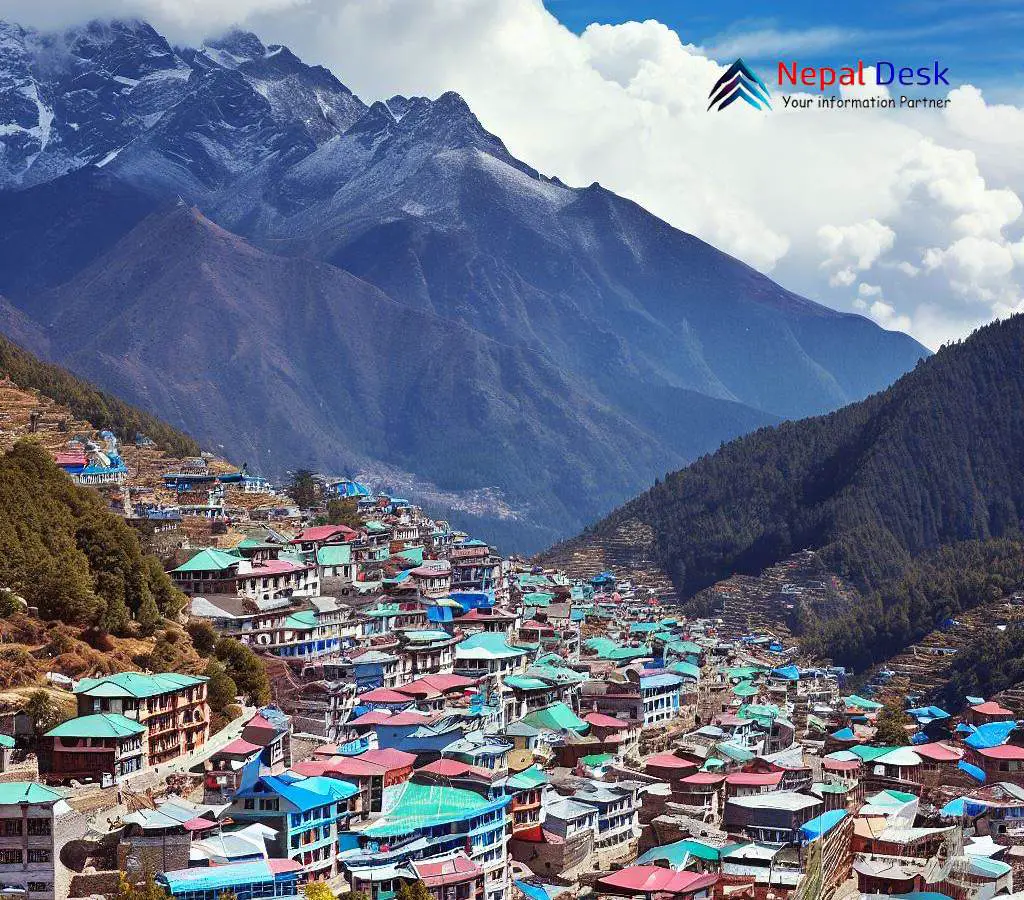Mount Everest's Gateway Warms Up: Namche Bazaar's Climate Crisis
Published Date

Published Date
Namche Bazaar, known as the gateway to the world's highest peak, Mt. Everest, is experiencing an unusual rise in temperatures that is significantly impacting the local community.
⏱ 2 min read
Namche Bazaar, often called the gateway to Mount Everest, is witnessing an unexpected rise in temperatures that are significantly affecting the local community.
Recent daytime temperatures in this high-altitude region have reached 12 degrees Celsius, a notable difference from the usual 4 to 5 degrees Celsius recorded during this time in prior years. The Department of Hydrology and Meteorology has verified this unusual temperature increase, which has persisted for a week.
This isn't the first instance of such high temperatures in Namche Bazaar. Residents remember a similar heatwave about 12 years ago. Nonetheless, the return of these high temperatures is causing worry among locals. With rising temperatures, people in Namche Bazaar are struggling with these unparalleled changes and the problems they pose to their everyday lives and income sources.
The recent heatwave in Namche Bazaar, a high-altitude area in Nepal, is more than just a local issue; it's a sign of a worldwide problem increasingly impacting remote regions around the globe - climate change. With temperatures hitting an abnormal 12 degrees Celsius, the local community faces challenges on multiple fronts.
This temperature anomaly, corroborated by the Department of Hydrology and Meteorology, isn't unique. However, the repetition of such high temperatures in an area known for its chilly climate serves as a vivid reminder that our planet's weather patterns are changing.
The consequences of this heatwave are tangible within the local community. Agriculture, a cornerstone of the local economy, is being affected as crops like potatoes have difficulty growing in the unseasonable warmth. The tourism sector, another significant part of the local economy, is also experiencing negative impacts as this odd weather repels visitors.
Namche Bazaar's situation exemplifies the socio-economic challenges brought about by climate change. As global temperatures continue to soar, disruptions to local economies and livelihoods are likely to become more frequent.
From a technical standpoint, this increase in the frequency and severity of such temperature anomalies aligns with climate model predictions. These models anticipate more extreme weather events as global temperatures rise, and the Namche Bazaar heatwave fits this trend.
The heatwave in Namche Bazaar serves as a wake-up call, emphasizing the pressing need for climate action and the pursuit of a sustainable future. As we face the realities of climate change, the necessity for comprehensive and coordinated efforts has never been more crucial.
